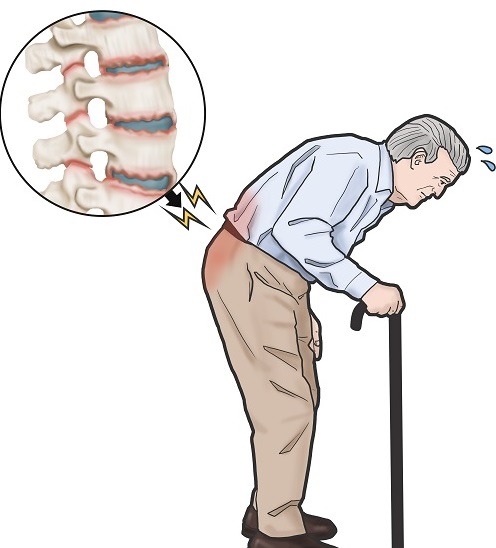What is Ankylosing Spondylitis?
Ankylosing Spondylitis (AS) is a rheumatic disease that can result in the development of disability, especially when chronic, progressive and disease activity with spinal involvement is not controlled by drugs. As a result of inflammation in the joints and ligaments that enable the movement of the spine, the spine can fuse with each other in a way that loses its movements. Besides the spine, inflammation may be observed in the hip, knee and foot joints, as well as various internal organ findings can be observed in a small number of patients. In as treatment, the patient's knowledge of the disease may be useful in slowing down the deformities that may develop.
In AS, pain decreases with movement, or even disappears; by sitting for a long time, it increases with rest. Patients are more painful when they get out of bed in the morning and especially have limited spinal movements; however, pain and limitation decrease later in the day. Patients wake up from sleep at night due to pain. The first symptoms of AS may be back, hip and heel pain. If the disease is not treated properly, spinal deformities, hunchbacks and movement restrictions will occur in the future.
Genetic predisposition is a known feature of AS. The risk of developing AS is 25% in the HLA-B27 positive child of the father with HLA B27 positive AS.
Who has ankylosing spondylitis?
AS is 2-3 times more common in men than in women and usually begins at an early age (16-35 years old). The incidence usually ranges from 0.1 to 1.4%. Although the exact frequency rate in Turkey is not known, considering that it is 0.5% frequency on average, we can say that there are approximately 300-350 thousand AS people in our country.
What is the cause of ankylosing spondylitis?
The exact cause of AS is unknown. Genetic factors play an important role in the causes of the disease. Apart from genetic causes, various environmental factors, especially infectious agents, are thought to contribute to the development of the disease.
How is ankylosing spondylitis diagnosed?
AS should come to mind in cases that last more than 3 months in the waist area and are accompanied by morning arrest. Low back pain is especially pronounced during rest period and decreases with movement during the day. Most patients may have pain in the heels and pain during hard surface pressing and difficulty walking. In laboratory tests, sedimentation rate and C-reactive protein may be high as a disease activity indicator. HLA-B27 (+) can be detected. X-rays of the spine and pelvis are helpful in diagnosis. However, X-ray filming may be completely normal in the early stages of the disease. Mri examination in early imaging is more valuable for inflammation in patients with high clinical suspicion in terms of AS. The combination of clinical and radiological findings is diagnostic for AS.
How to Treat Ankylosing Spondylitis?
Early diagnosis and treatment slow down the progression of the disease and are very important in preventing disability due to mobility limitation. However, it is not possible to fully recover from the disease. The goal in the treatment of the disease is to reduce the activity of the disease or to provide remission. Anti-inflammatory rheumatic drugs are used to suppress disease activity. Regular exercises must be carried out. In-water exercises and swimming are especially recommended. The main purpose of the exercise program is to prevent movement limitation and body posture disorders rather than preventing ongoing inflammation. Anti-TNF alpha therapy (biological agent therapy), which is one of the last treatment methods and has been applied in our country, is the most effective treatment in stopping the progression of the disease. Since the activity of the disease is fast in smokers, it is important to stop smoking.
How should disease monitoring and follow-up be done?
It should be remembered that the disease is continuous and the effectiveness of treatment should be monitored with regular checks. Deformities appear faster in patients who are untraceable for a long time. Therefore, the more important early diagnosis and treatment is, the more important it is to carry out follow-ups regularly. Your doctor will call you for regular check-ups and your disease activity will be evaluated. As a result of the assessments, it may be necessary to add and remove drugs in your treatment. Both your disease activity is tried to be controlled and the drugs are evaluated for side effects. Since AS is a chronic disease, treatment lasts a lifetime and requires regular follow-up.





